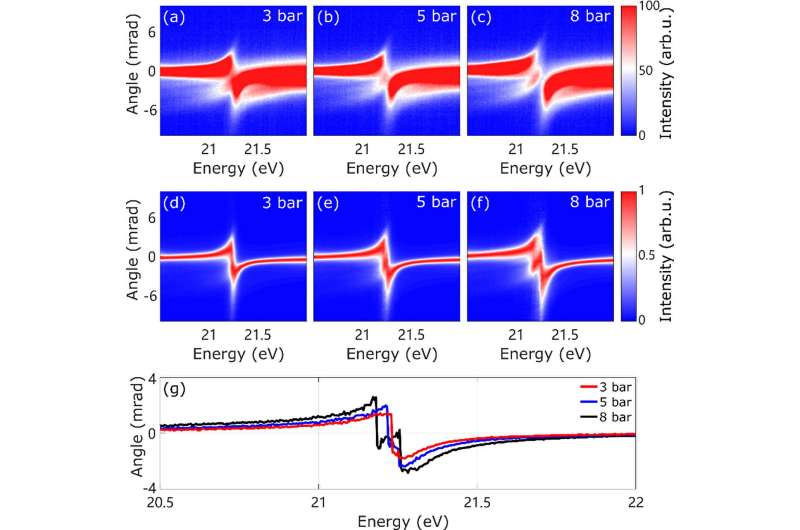This article has been reviewed according to Science X's editorial process and policies. Editors have highlighted the following attributes while ensuring the content's credibility:
fact-checked
proofread
Observation of a refractive index line shape in ultrafast XUV transient absorption spectroscopy

Ultrafast extreme ultraviolet (XUV) spectroscopy is a powerful technique for probing the dynamics of atoms and molecules with attosecond time resolution. However, conventional XUV absorption measurements only provide information about the imaginary part of the complex refractive index, which is related to the absorption coefficient. The real part of the refractive index, which describes the chromatic dispersion of the material, is usually inaccessible.
In a new study published in Ultrafast Science, Mingze Sun et al. have demonstrated a novel method to measure the refractive index line shape in ultrafast XUV transient absorption spectroscopy. They used a scheme where the XUV pulse traverses the target gas jet off-center, which induces deflection on the XUV radiation due to the density gradient of the jet. By measuring the frequency-dependent XUV deflection spectra, they were able to reproduce the refractive index line profile.
The researchers also showed that they could control the refractive index line shape by introducing a later-arrived near-infrared pulse to modify the phase of the XUV free induction decay, resulting in different XUV deflection spectra. This technique allowed them to manipulate the matter response to the XUV light field and explore new physical phenomena.
The study reveals new insights into matter-induced absorption and deflection in ultrafast XUV spectroscopy. The real refractive index and the absorption index may be measured simultaneously, which provides a full picture of a material's linear response to incident light.
More information: Mingze Sun et al, Observation of Refractive Index Line Shape in Ultrafast XUV Transient Absorption Spectroscopy, Ultrafast Science (2023). DOI: 10.34133/ultrafastscience.0029
Provided by Ultrafast Science




















